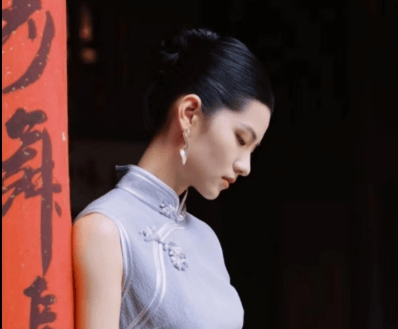How to pronounce the classic Chinese dress "Qipao"
This article will explain how to correctly pronounce "qipao" (a traditional Chinese dress) by analyzing the tones of each character. It will also highlight some common pronunciation errors through visual means.
QIPAO KNOWLEDGE
6/12/20252 min read


Pronunciation Basics: "Qipao"
The term qipao is composed of two Chinese characters: 旗 (qí) and 袍 (páo). To pronounce it correctly:
"Qí" (旗):
Start with a soft "ch" sound (like "chee" in "cheese").
Add a slight rising tone at the end, as if posing a question. In pinyin (the Romanization system for Chinese), this is represented by the second tone mark (◌́), which elevates the pitch.
Example: Imagine saying "chee" with a gentle upward inflection.
"Páo" (袍):
Begin with a short "p" sound (as in "pop").
Follow it with a long "ow" vowel sound, similar to "paw" in English.
Keep the tone flat and steady—no pitch change here.
Putting it together: "chee-pow" (with the emphasis on "chee").
Common Mispronunciations to Avoid
"Chih-pao": Overemphasizing the "ch" sound or misplacing the tone.
"Key-pow": Confusing the initial "q" sound with a hard "k."
Monotone delivery: Flattening both syllables loses the linguistic rhythm of Mandarin.
The Cultural Significance of the Qipao
Beyond pronunciation, the qipao carries deep historical and cultural weight:
Origins:
Born in 1920s–1930s Shanghai, the qipao evolved from Manchu women’s attire during the Qing Dynasty. Early versions were loose-fitting, but modern iterations embraced a form-fitting silhouette that celebrated female curves.
Symbolism:
The dress embodies the fusion of tradition and modernity. Its high collar, frog fastenings, and side slits reflect Chinese heritage, while its tailored cuts and fabrics (like silk or brocade) adapt to contemporary aesthetics.
Global Influence:
From Hollywood red carpets to Paris Fashion Week, the qipao has inspired designers like Pierre Cardin and Alexander McQueen. Celebrities like Nicole Kidman and Zhang Ziyi have spotlighted it in films and events, cementing its status as a timeless icon.
Why Pronunciation Matters
Mastering "qipao" does more than avoid misunderstandings—it shows respect for Chinese culture. Whether you’re:
Discussing fashion history,
Shopping for a custom-made dress, or
Admiring it in a museum,
using the correct pronunciation fosters meaningful connections.
Tips for Practice
Listen and Repeat: Use audio resources like Forvo or language apps to hear native speakers.
Break It Down: Practice "qí" and "páo" separately before merging them.
Contextualize: Pair the word with imagery—visualize a qipao-clad figure in a vintage Shanghai poster to link sound and meaning.
The qipao is not just a dress; it’s a cultural ambassador. By learning to pronounce its name correctly, you honor the artisans, designers, and wearers who have kept this garment alive for centuries. So next time you admire its elegance, remember: it’s "chee-pow"—a small word with a rich story.Now, go forth and pronounce it with confidence!
The qipao (旗袍), a sleek, figure-hugging dress synonymous with elegance and Chinese culture, often sparks curiosity about its pronunciation. For fashion enthusiasts, history buffs, or anyone eager to navigate cross-cultural conversations, mastering the correct pronunciation of this term opens doors to appreciating its cultural significance. Let’s break down the pronunciation, explore its origins, and understand why this garment continues to captivate the world.


